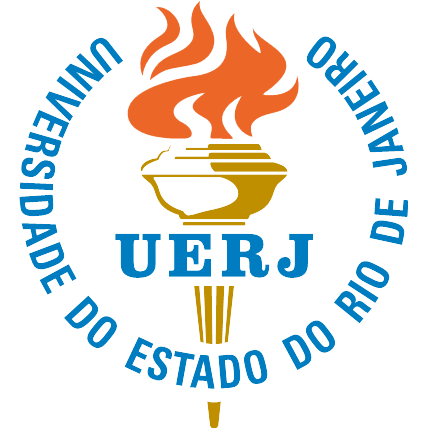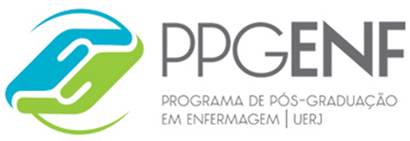Submissions
Submission Preparation Checklist
As part of the submission process, authors are required to check off their submission's compliance with all of the following items, and submissions may be returned to authors that do not adhere to these guidelines.- The contribution is original and unpublished, and is not being evaluated for publication by another journal; otherwise. The relevance of the study and its compliance with research integrity and ethics should be presented in the "Comments to the Editor"
- The research protocol follows the principles for promoting diversity, equity, inclusion and accessibility in scientific research
- Files for submission are sent in Word for Windows, Calibri 10 font, simple spacing, with pages numbered from the introduction sheet (p.1) to the end of the references, configured on A4 paper and with four margins of 2.0 cm
- The text follows the style standards and format requirements of the Journal described in "Authors Guidelines", in the "About" section
- The title, in the language of submission, has a maximum of 15 words, with the first letter of the first word capitalized
- It presents an Abbreviated Title with a maximum of six words and with only the first letter capitalized
- The abstract is presented in the submission language and written in the form of a structured summary, containing: Objective, Method, Results and Conclusion, and does not exceed 150 words
- It presents between three and five descriptors with their respective counterparts in English and Spanish, preferably in accordance with DeCS and MeSH
- The titles of the textual sections, as well as the word ABSTRACT, are written in capital letters and bold, without numbering. Primary section in bold capital letters; and secondary section in lowercase and bold. Ex.: ABSTRACT; INTRODUCTION (primary section); History (secondary section)
- References follow the Vancouver style, are updated (with a maximum of five years of publication) and are mostly from articles in periodicals. Exceptions may be justified in the "Comments to the Editor"
- In the text citation of references, the names of the cited authors were replaced by their numerical coding, superscript and WITHOUT parentheses as they were cited in the text. Expressions such as "According to...", "According to..." should not be used
- By accepting the terms of submission, the authors must declare that they have read the Code of Ethics of the Revista Enfermagem UERJ, declare adherence of the article submitted to its principles and are aware of their responsibilities
- For Research Articles including humans, the approval document by the Research Ethics Committee must be sent to the Journal in the form of a digitized document, attached as a supplementary file. If more than one opinion is issued, all reports must be presented, in sequence, in a unified file. The registration number, the name of the institution involved in ethical approval and the approval protocol number must not be cited in the manuscript content
- It is recommended to use the field “How do you prefer to be treated? Address pronouns, middle names and suffixes can be added here.” To present the social name or the spelling of the author's name as it should be presented in case of publication of the manuscript
- In METADATA and in the Title Page, all author's ORCID identifiers must be reported using the full standard format, as in the following example: https://orcid.org/0000-0002-0823-0818
- The Editorial Board and Ad-Hoc Consultants (reviewers) reserve the right to request revision, replacement and/or withdrawal of references from journals and publications (scientific or not) with editorial practices that do not converge with the editorial policy of Revista Enfermagem UERJ
Update Articles
Reflective or informative text on a relevant and current subject, with a perspective of interest for nursing and health; exchange of opinions between editors and readers on published works or comments and contributions relevant to the Revista Enfermagem UERJ.
Theoretical Reflection Articles
Analysis of theoretical constructs, leading to the questioning of existing models in nursing and health and the elaboration of hypotheses for future research.
Review Articles
Papers corresponding to the analysis of a comprehensive and extensive investigations related to matters of interest to the development of nursing and health; favors systematic reviews or narrative reviews that include steps of the methodological process on which it was based.
Call “Role of Specialized Nurses in National and International Health Care Networks”
Revista Enfermagem UERJ (Qualis Capes 2020 A4) invites the national and international scientific community to submit manuscripts in Portuguese, English or Spanish to the special call: “Role of Specialized Nurses in National and International Health Care Networks”.
Target audience: Nurses, professionals in the area of health, human sciences and related areas.
Theme: The call for submission of unpublished manuscripts “Role of Specialized Nurses in National and International Health Care Networks” intends to enable the dissemination of knowledge adressing different specialties of Nursing, with emphasis on productions in teaching, care and management, at different levels of healthcare.
Articles category: Research Articles.
Judgement process: peer review.
Submission deadline: April 30, 2023.
Decision anoucement: 2023 Continuous Flow.
Copyright Notice
When publishing in Revista Enfermagem UERJ, the authors declare that the work is their exclusive authorship and therefore assume full responsibility for its content.
Authors retain copyright to their article and agree to license their work using a Creative Commons Attribution International Public License (CC BY), thereby accepting the terms and conditions of this license (https://creativecommons.org/licenses/by/4.0/legalcode.en), which allows material created by the author to be distributed, copied and displayed by third parties. The original work must be cited and present a link to the article available on the website of the journal in which it was published.
The Copyright of the articles published in Revista Enfermagem UERJ belongs to their respective author(s), with the rights of first publication assigned to Revista Enfermagem UERJ, with the work simultaneously licensed under a Creative Commons License CC BY, which allows sharing of work with recognition of authorship and initial publication in this journal.
The authors grant Revista Enfermagem UERJ the right of first publication, to identify themselves as the original publisher of the work and grant the journal a license of non-exclusive rights to use the work in the following ways:
- Sell and/or distribute the work in printed copies and/or electronic format;
- Distribute parts and/or the work as a whole with the aim of promoting the journal through the internet and other digital and printed media;
- Record and playback work in any format, including digital media.
In line with the journal's policies, each published article will be assigned a Creative Commons Attribution (CC BY) license.
Privacy Statement
The names and addresses given in this journal will be used exclusively for the services provided by this publication and will not be made available for other purposes or to third parties.





